Tag: William Burleigh ’19
Beyond Oppression and Struggle: Oscar Films Should Celebrate Black Excellence
by The Cowl Editor on December 6, 2018
Arts & Entertainment
by: William Burleigh ’19 A&E Staff
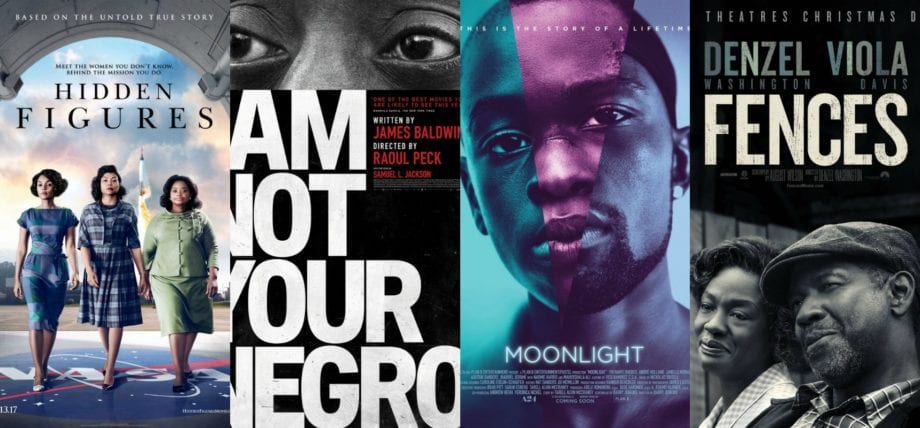
Last week, The Cowl discussed Widows, a new gritty heist thriller from director Steve McQueen, which was released on Nov. 16. Widows—which follows the wives of four thieves who die in an explosive armed robbery attempt in Chicago and their scheme to finish the job after their husbands’ deaths—has been praised for its direction, screenplay, and performances.
But ultimately, Widows’ greatest achievement is its ability to offer black actors a cinematic voice through a form of storytelling which they are not frequently offered. Far too often, Oscar-caliber films depicting black stories focus on a far-too-narrow definition of what it means to be authentically black. These films tell stories about racism and racial struggle, which is not necessarily a bad thing, as they are issues that need to be discussed. However, while these types of films are oftentimes told through an uplifting or optimistic lens, they are almost always rooted in sorrow and historical oppression.
Notable Oscar-nominated films in recent years that exemplify this issue are The Help (2011), Django Unchained (2012), Selma (2014), Hidden Figures (2016), Fences (2017) and McQueen’s own 12 Years a Slave (2013). All of these films were well-received and highly acclaimed. But each of them centers around stories that take place during either the pre-Abolition time of slavery or the pre-Civil Rights era of segregation.
Simply put, these films focus mainly on black struggle, without looking beyond themes of prejudice in order to pursue the more entertaining, hopeful stories afforded to white actors and filmmakers. This trend is further exemplified this year with Oscar candidates such as Green Book, BlacKkKlansman, and If Beale Street Could Talk.
Green Book, set in 1962 in the deep South, explores the relationship between Dr. Don Shirley, an acclaimed black pianist (Mahershala Ali), and his white chauffeur. BlacKkKlansman, which takes place in the early 1970s, focuses on an African-American police officer (John David Washington) who infiltrates the Ku Klux Klan. If Beale Street Could Talk, adapted from a James Baldwin novel and set in the early 1970s, examines issues in the criminal justice system through the story of a young woman who sets out to clear the name of her wrongly accused husband.
These films have all received acclaim and certainly deserved production. However, their focus on telling stories that are almost exclusively interested in exploring the complications of race and racism reinforces the incorrect and harmful notion that tales of racial adversity and suffering are the only avenue through which black creatives can obtain prestige.
Consequently, films that are able to subvert this trend by giving black actors roles in films that do not solely center around racism should be lauded for their achievements. Thankfully, there have been several examples recently, with Widows being a prime example.
While Widows does offer insightful critiques on classism and police brutality, they are themes more subliminal than heavy-handed and are presented in a subtle manner that never overwhelms or distracts the viewer from the primarily thrilling storyline. Black Panther, one of the most acclaimed films of 2018, is another example of a film with a positive message and Oscar ambitions.
It touches on the history of slavery and white supremacy, but never lets these themes hijack the film’s main purpose of being an upbeat and exciting superhero adventure. It celebrates black excellence instead of becoming overly mired in the history of oppression. Likewise, Michael B. Jordan’s Creed franchise is a series that emphasizes boxing talent over racial identity. The titular Adonis is never limited or constricted by his blackness, but instead judged solely on his ability to become a boxing champion.
Overall, stories about racism and black struggle deserve to be told. They serve as stirring, emotional, and important reminders of the historical struggles that black people have always faced in America. However, putting an emphasis on crisis in black storytelling only contributes to an inauthentic and incomplete cinematic representation of what it means to be black.
Black filmmakers should have the creative freedom to expand the boundaries of black story-telling by eschewing the limited and stereotypical understanding of what constitutes a film that is Oscar-worthy and black.
Films about the lives of people of color do not need to primarily center around slavery, oppression, or racial struggle in order to be considered prestigious. Widows, Black Panther, and Creed are proof of that.
Steve McQueen Releases Latest Film, Widows: A Heist Thriller with Oscar Ambitions and a Lot on its Mind
by The Cowl Editor on November 29, 2018
Arts & Entertainment
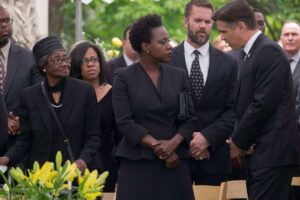
by William Burleigh ’19
A&E Staff
One of the most critically acclaimed movies currently playing in theaters is Widows, a gritty heist thriller released on Nov. 16. The intense plotline follows the wives of four thieves who die in an explosive armed robbery attempt in Chicago, their scheme to finish the job after their husbands’ deaths, and their goal to forge a future on their own terms.
Widows, which originally premiered at the Toronto International Film Festival in September, has numerous strong elements that make it worth seeing. It is directed by Steve McQueen, an acclaimed British filmmaker who previously helmed Michael Fassbender dramas Hunger (2008) and Shame (2011). McQueen’s best-known work, though, is his epic historical period drama 12 Years a Slave (2013), which won the Academy Award for Best Picture, making McQueen the first black filmmaker to gain such a recognition. The immensely talented McQueen, who co-wrote Widows with Gillian Flynn (Gone Girl), has also received the Turner Prize, the highest award given to a British visual artist.
Widows also boasts an all-star cast. Oscar winner Viola Davis (Fences) carries the film, giving a fiery performance as Veronica Rawlings, the calculating leader who is not afraid to threaten and intimidate her own crew in order to ensure success. Elizabeth Debicki (The Night Manager, The Great Gatsby) offers a career-best performance as Alice, an anxious woman who is left in financial ruin after her abusive husband dies in the opening minutes and becomes determined to see the job through. Michelle Rodriguez (Fast & Furious) plays Linda, a tough mother facing intense debt after being cut off by her family. Rounding off the crew is Cynthia Erivo—fresh off her revelatory role in Bad Times at the El Royale—as Belle, a tough boxer whose raw physicality is a vital addition to the crew’s repertoire.
Liam Neeson co-stars as Veronica’s husband, Harry Rawlings, whose criminal dealings kickstart the film’s plot. Brian Tyree Hill (Atlanta), Colin Farrell, and Robert Duvall also appear. One of Widows’ most standout performances is given by Daniel Kaluuya, playing a brutal, unflappable gangster who threatens and kills his enemies with a cold-blooded calm. This chilling character shows off the actor’s range and proves that, after becoming a household name for his Oscar-nominated role in Get Out, Kaluuya is a talent who is just getting started.
One of Widows’ best and most interesting qualities is its ability to bend genre and theme. This is mostly due to Steve McQueen’s skillful ability to fashion a hybrid film that combines the arthouse sensibilities of his roots with an accessible story that is fun and exciting. 20th Century Fox deserves credit for backing this vision of a film that is equal parts entertaining and intriguing: an action movie with Oscar potential.
At its core, Widows is a heist film: its story revolves around a crew of inexperienced thieves trying to pull off an ambitious job. But it tackles this storyline and its heist film tropes in a particularly unique way. While genre staples such as Heat, The Usual Suspects, and The Town have served as favorites for male audiences for years, few heist films have ever placed women at the forefront of their stories, with this past summer’s Ocean’s 8 being a notable exception. However, Ocean’s 8 focused more on comedic elements and an upbeat atmosphere to satisfy audiences, while Widows instead doubles down on intensity, high stakes, and the grim determination of its leading ladies to solidify its thesis that women, too, can propel an enthralling heist film and deserve a place in the genre.
Beyond engaging with feminism, Widows also tackles many other heavy themes because its leads are not only female, but also diverse. Set in the 18th ward of Chicago against the backdrop of a tight political race between a white incumbent candidate and his surging black opponent, the film touches on issues of racism, classism, and police brutality —one scene involving a young black teen being gunned down in the shadow of Barack Obama’s “Hope” and “Change” posters is particularly heart-breaking—in a subtle manner that never overwhelms or distracts the viewer. Essentially, the film never feels heavy-handed in its message; Widows makes its comments on these current issues without sacrificing car chases, thrills, and gunplay.
Widows, an exciting heist thriller with topical messages that never overshadow but instead only accentuate its intensity, is currently playing in theaters nationwide.
Steve McQueen Releases Latest Film, Widows: A Heist Thriller with Oscar Ambitions and a Lot on its Mind
by Kerry Torpey on November 29, 2018
Arts & Entertainment

by William Burleigh ’19
A&E Staff
One of the most critically acclaimed movies currently playing in theaters is Widows, a gritty heist thriller released on Nov. 16. The intense plotline follows the wives of four thieves who die in an explosive armed robbery attempt in Chicago, their scheme to finish the job after their husbands’ deaths, and their goal to forge a future on their own terms.
Widows, which originally premiered at the Toronto International Film Festival in September, has numerous strong elements that make it worth seeing. It is directed by Steve McQueen, an acclaimed British filmmaker who previously helmed Michael Fassbender dramas Hunger (2008) and Shame (2011). McQueen’s best-known work, though, is his epic historical period drama 12 Years a Slave (2013), which won the Academy Award for Best Picture, making McQueen the first black filmmaker to gain such a recognition. The immensely talented McQueen, who co-wrote Widows with Gillian Flynn (Gone Girl), has also received the Turner Prize, the highest award given to a British visual artist.
Widows also boasts an all-star cast. Oscar winner Viola Davis (Fences) carries the film, giving a fiery performance as Veronica Rawlings, the calculating leader who is not afraid to threaten and intimidate her own crew in order to ensure success. Elizabeth Debicki (The Night Manager, The Great Gatsby) offers a career-best performance as Alice, an anxious woman who is left in financial ruin after her abusive husband dies in the opening minutes and becomes determined to see the job through. Michelle Rodriguez (Fast & Furious) plays Linda, a tough mother facing intense debt after being cut off by her family. Rounding off the crew is Cynthia Erivo—fresh off her revelatory role in Bad Times at the El Royale—as Belle, a tough boxer whose raw physicality is a vital addition to the crew’s repertoire.
Liam Neeson co-stars as Veronica’s husband, Harry Rawlings, whose criminal dealings kickstart the film’s plot. Brian Tyree Hill (Atlanta), Colin Farrell, and Robert Duvall also appear. One of Widows’ most standout performances is given by Daniel Kaluuya, playing a brutal, unflappable gangster who threatens and kills his enemies with a cold-blooded calm. This chilling character shows off the actor’s range and proves that, after becoming a household name for his Oscar-nominated role in Get Out, Kaluuya is a talent who is just getting started.
One of Widows’ best and most interesting qualities is its ability to bend genre and theme. This is mostly due to Steve McQueen’s skillful ability to fashion a hybrid film that combines the arthouse sensibilities of his roots with an accessible story that is fun and exciting. 20th Century Fox deserves credit for backing this vision of a film that is equal parts entertaining and intriguing: an action movie with Oscar potential.
At its core, Widows is a heist film: its story revolves around a crew of inexperienced thieves trying to pull off an ambitious job. But it tackles this storyline and its heist film tropes in a particularly unique way. While genre staples such as Heat, The Usual Suspects, and The Town have served as favorites for male audiences for years, few heist films have ever placed women at the forefront of their stories, with this past summer’s Ocean’s 8 being a notable exception. However, Ocean’s 8 focused more on comedic elements and an upbeat atmosphere to satisfy audiences, while Widows instead doubles down on intensity, high stakes, and the grim determination of its leading ladies to solidify its thesis that women, too, can propel an enthralling heist film and deserve a place in the genre.
Beyond engaging with feminism, Widows also tackles many other heavy themes because its leads are not only female, but also diverse. Set in the 18th ward of Chicago against the backdrop of a tight political race between a white incumbent candidate and his surging black opponent, the film touches on issues of racism, classism, and police brutality —one scene involving a young black teen being gunned down in the shadow of Barack Obama’s “Hope” and “Change” posters is particularly heart-breaking—in a subtle manner that never overwhelms or distracts the viewer. Essentially, the film never feels heavy-handed in its message; Widows makes its comments on these current issues without sacrificing car chases, thrills, and gunplay.
Widows, an exciting heist thriller with topical messages that never overshadow but instead only accentuate its intensity, is currently playing in theaters nationwide.
Claire Foy’s The Girl in the Spider’s Web Concludes Her Best Year Yet
by Kerry Torpey on November 15, 2018
Arts & Entertainment
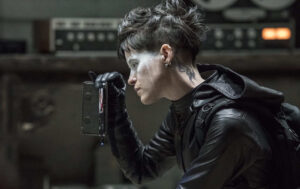
by William Burleigh ’19
A&E Staff
A new cinematic incarnation of the iconic The Girl with the Dragon Tattoo character was on Nov. 9 when The Girl in the Spider’s Web, starring Claire Foy. In the crime thriller film, Foy plays the titular Lisbeth Salander, an introverted and asocial computer hacker anti-heroine. The massively popular Lisbeth Salander comes from literary origins: she is the lead character in the Millennium series, written by Swedish author Stieg Larsson and commonly known for his first book, The Girl with the Dragon Tattoo. A survivor of emotional trauma and sexual assault, Salander is known for her dedication to rescuing and exacting revenge for women who are battered and abused by predatory men.
Foy is the third actress to portray Salander onscreen, in the fifth Dragon Tattoo film total. The first three books of Larsson’s series were previously adapted in a Swedish-language trilogy, which starred Noomi Rapace and came out in 2009, to critical acclaim.
Following the popularity of the Swedish films, a Hollywood edition of the first book, The Girl with the Dragon Tattoo, was released in 2011. This American version stars Rooney Mara as Lisbeth and is directed by David Fincher.
Foy’s The Girl in the Spider’s Web is based on the fourth book of Larrson’s series. It is a sequel to Fincher’s 2011 rendition, but is considered a soft reboot. It follows the same storyline and characters, but with different actors.
This new iteration with Foy, directed by Fedé Alvarez (Don’t Breathe), follows Salander as she attempts to navigate a web of spies, cybercriminals, and corrupt government officials. Sylvia Hoeks (Blade Runner 2049) co-stars as Salander’s villainous sister, the head of a major crime syndicate. Lakeith Stanfield (Get Out, Atlanta, Sorry to Bother You) also appears as an NSA security expert tasked with tracking Salander’s every move.
While the film has received mixed reviews, Foy’s performance has been cited as a highlight. Indiewire praised Foy as being “the best on-screen depiction of Lisbeth yet.” The publication added that Foy’s particular nuances are a testament to the idea that “the full spectrum of her talents have yet to be tapped” and make for “a better and richer take on the character” than those given by previous portrayals.
This acclaim for Foy comes at the end of a highly successful year for the newly minted leading lady. While Foy is most well-known for her popular role as Queen Elizabeth II in the Netflix original series The Crown, a biographical drama which details the story of the English monarch and has garnered her a Golden Globe and an Emmy for her noteworthy performance as the steadfast queen, Foy has had a standout year with three films already released.
In March, she starred as a troubled mental institution patient in the experimental Steven Soderbergh horror film Unsane. Foy gave a fiery performance as Janet Armstrong in Damien Chazelle’s historical biopic First Man, which premiered at the Venice Film Festival and was released last month. Many are predicting that her performance in First Man will result in her first career Oscar nomination.
To cap it off, Foy’s new take on the Lisbeth Salander character marks her first lead role in a major blockbuster. The Girl in the Spider’s Web is currently playing in theaters nationwide.
“Classic Beauty: 21st-Century Artists on Ancient [Greek] Form”
by The Cowl Editor on November 8, 2018
Art
PC-Galleries Celebrates Ancient Art Through a Contemporary Lens
by: William Burleigh ’19 A&E Staff

Providence College-Galleries’ current fall exhibition, which opened on Sept. 12, has been available to the public for several weeks now. Titled “Classic Beauty: 21st-Century Artists on Ancient [Greek] Form,” the group exhibition examines the ongoing influences that ancient, antique, and classical styles have on the mindsets and work of contemporary artists. The artwork of the exhibition, which was curated by PC-Galleries Director Jamilee Lacy, which can be viewed in the Hunt-Cavanagh Gallery at Hunt-Cavanagh Hall and the Reilly Gallery at the Smith Center for the Arts, consists of pieces by local, national, and international professional artists.
One of the artistic goals of “Classic Beauty” is to establish the visual traditions of ancient Greek styles as a fluid and constantly-evolving medium, in order to glean further insight into the history and evolution of its forms. The exhibition’s various pieces—which include architectural objects, collages, ceramics, drawings, paintings, sculptures, and installations—classify as modern art, but they were produced in a style reminiscent of the ancient Greek form, with themes of antiquity in mind. This method of deconstructing the tropes of Greek art, while imbuing it with a modern twist, makes for an exhibition filled with intriguing and thought-provoking pieces.
The second, but equally important, goal of the “Classic Beauty” exhibition is to examine where the ancient Greek form descends and takes its influences from. Contrary to common historical beliefs which purport that the ancient Greeks gave way to the art of Western civilization, many of the styles and techniques employed by the Greeks were actually adapted from non-Western cultures of the Near East, Northern Africa, and East Asia, as detailed by the research of art historians and archaeologists. By exploring this complex theme, the multi-layered projects of the “Classic Beauty” exhibition challenge the traditional idea of ancient Greek art as being iconic in its originality and debates the visual legacy of Western civilization as a whole. Consequently, perhaps it can be said that the most important goal of PC-Galleries’ “Classic Beauty” exhibition is to examine how artists throughout history have appropriated and manipulated the styles of antiquity.
The artists of the exhibition include Robert Andrade, Daniel Baird, Lakela Brown, Matthew Craven, Vivian Greven, Molly Kaderka, Lucy Kim, Kirstin Lamb, Shari Mendelson, David Ross Harper, and Ruby Sky Stiler.

To provide further insight into the creative process behind the current exhibition, PC-Galleries has been hosting mini-symposia, open to the public, throughout the semester. These events include dialogues on the pieces by the artists themselves and PC scholars familiar with the work. Question-and-answer sessions follow, in which students can engage with the artists to learn more about the pieces and their creative path to fruition.
PC-Galleries is hosting the third and final of its three mini-symposia on Wednesday, November 14, from 6 to 7:30 p.m., in the Smith Center for the Arts. Artists Kim, Mendelson, and Stiler will all be present to discuss their work and engage in dialogue with guests. The exhibition is open in the Smith Center for the Arts until Nov. 17.
The Lasting Cultural Relevance of Steven Spielberg’s Schindler’s List
by The Cowl Editor on November 1, 2018
Arts & Entertainment
by: William Burleigh ’19 A&E Staff
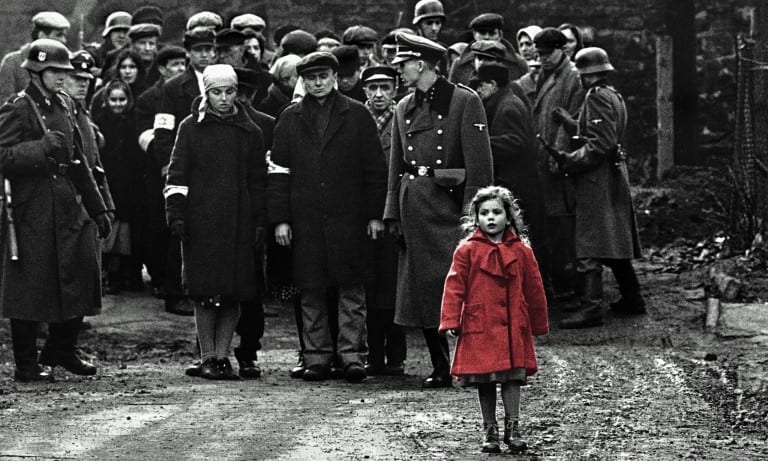
Dr. Raymond Sickinger’s “History of Nazi Germany” seminar at Providence College recently screened Schindler’s List (1993), an epic historical drama that tells the true story of Oskar Schindler, a German businessman who saved the lives of more than 1,000 Jewish refugees from the Holocaust by employing them in his factories during World War II. The film stars Liam Neeson as Schindler and Ben Kingsley as Schindler’s Jewish accountant, Itzhak Stern. Ralph Fiennes also appears, in one of his career-best performances, as the cruel SS officer Amon Göth.
Schindler’s List was directed by Steven Spielberg, an Orthodox Jew whose resolve to make the film became complete when studio executives asked him why he did not simply make a donation of some sort instead of wasting the studio’s time and money on a depressing film.
Spielberg brought all of his directorial talent to Schindler’s List, which is considered to be one of his best. Spielberg shot the film with the same approach as a documentary film, relying heavily on hand-held camera techniques to evoke the quality of newsreel footage. Additionally, Spielberg decided to shoot the film entirely in black and white (except for the iconic image of a young girl in a red dress and a poignant epilogue scene involving the real-life “Schindler Jews” visiting Oskar Schindler’s grave) to create a sense of historical and emotional authenticity.
Several other aspects of Spielberg’s direction are noteworthy. While he was granted permission to film inside the Auschwitz concentration camp, he chose not to out of respective for the victims who died there, and instead built a set that mirrored the camp’s exact looks in order to film there.
Spielberg insisted that all royalties and residuals owed to him for his work on the film be instead given to the Shoah Foundation, which records and preserves testimonies of survivors of genocide worldwide, many of which are from the Holocaust. He also refuses to autograph any materials related to Schindler’s List.
When it was released 25 years ago on December 15, 1993, Schindler’s List was a box office success, grossing $321 million worldwide on a $22 million budget. It was also critically acclaimed and won seven Academy Awards (out of 12 nominations), including Best Picture, Best Director, Best Adapted Screenplay, and Best Original Score, as well as numerous other awards. In the years since, Schindler’s List has come to be regarded as one of the greatest movies of all time. It ranks seventh on IMDb’s Top 250 Rated Movies and boasts a rating of 93 on Metacritic.
The true significance of Schindler’s List, though, lies not in its box-office grosses and Academy Awards, but in its enduring cultural relevance as a reminder that the evil of anti-Semitism, while very present in our world, can be overcome with unity and courage. By painting one of the most tragic events in world history as a deeply emotional and profound portrait that inextricably links the devastation of Nazism with the beauty of Jewish hope, Schindler’s List cements itself as a timelessly powerful piece of cinema which proves that love can, and must, conquer hate. Above all else, Schindler’s List is significant because it never lets the bleakness of the Holocaust overwhelm its important theme of fighting for the common good, reflected best in one of the film’s final quotes, “He who saves the life of one man saves the world entire.”In 2018, Schindler’s List’s additional themes of equality, religious freedom, and fighting back against hate and injustice are still manifestly important. Unfortunately, these messages require constant reiteration, as evidenced by recent acts of anti-Semitism in the United States.
Last weekend, on Oct. 27, a mass shooting took place in a Jewish synagogue in Pittsburgh, Pennsylvania. A gunman armed with an AR-15 assault rifle and at least three handguns entered the synagogue during a service, yelled, “All Jews must die!” and opened fire. He killed 11 people and wounded six others.
As the shooter was taken into custody, he told authorities, “They’re committing genocide to my people. I just want to kill Jews.” The shooter frequently posted anti-Semitic threats and white nationalistic sentiments online. Federal authorities have filed 29 criminal charges against him, including 11 counts of obstructing the exercise of religious beliefs resulting in death.
This horrific hate crime, which is believed to be the single deadliest attack on the Jewish community in U.S. history, sheds light on the anti-Semitic rhetoric that plagues our country.
The U.S. Anti-Defamation League (ADL) reported nearly 2,000 cases of harassment, vandalism, and physical assault targeting Jewish people in 2017—a 57 percent increase from 2016. This was the largest single-year increase since the ADL first began tracking such data in 1979, and marked the highest number of anti-Semitic incidents on record since 1994. Additionally, last week, researchers with the ADL found a significant increase in online attacks targeting Jewish politicians, journalists, and others in the lead-up to next week’s midterm elections.
While it is indescribably tragic that the same anti-Semitic attitudes present in Schindler’s List are still held by any person, much less many, in 2018, that is the disturbing reality of the world today.
But it is a reality that must be changed. Anti-Semitism and other hateful rhetoric towards any minority group deserve no place in this country, or anywhere else in the world. No Jewish person should ever have to fear for their safety in any location, least of all in their place of worship. Ultimately, violent crimes of bigotry and hate, still present in our world even so long after the Holocaust, can be eradicated only through the hopeful, resilient fight for the acceptance of all people – a fight that must be ongoing until there is justice in this world.
Director Drew Goddard Continues to Evolve Hollywood Genres
by The Cowl Editor on October 25, 2018
Arts & Entertainment
by: William Burleigh ’19 A&E Staff
In October 2017, a GQ Magazine article asked the question of “how we ended up in the ‘Golden Age of Horror Movies.’” Freshness and originality have brought on a renaissance in the genre of horror, propelled by innovative films such as Get Out, It, and, more recently, A Quiet Place.
But this new wave of creativity is considered to be a recent development. Less than a decade ago, the horror genre was growing stagnate and in need of rejuvenation. The horror tropes which directors had leaned on for decades had become cliché, leading to the need for a total creative overhaul.
American filmmaker Drew Goddard tackled this obstacle head-on in 2011 with his directorial debut The Cabin in the Woods. This film, about five friends who rent out a remote cabin while on vacation and get more than they bargained for, was a commercial and critical success.
It gained acclaim for the way its twisting screenplay threw out the formula for what made horror films familiar and upended the traditional genre conventions that audiences had come to know so well. The Cabin in the Woods did not just wink at the audience; it completely pulled back the curtain on the tropes of the genre, deliberately shining the spotlight on the elements of horror which were successful and which had become played out and trite.
While Goddard’s The Cabin in the Woods did not necessarily kick-start the recent horror renaissance, it still marked an important transitional chapter on the journey from the old style to the new, primarily for its self-reflexive ability to confront its genre trappings head-on, and evolve the genre through deconstruction.
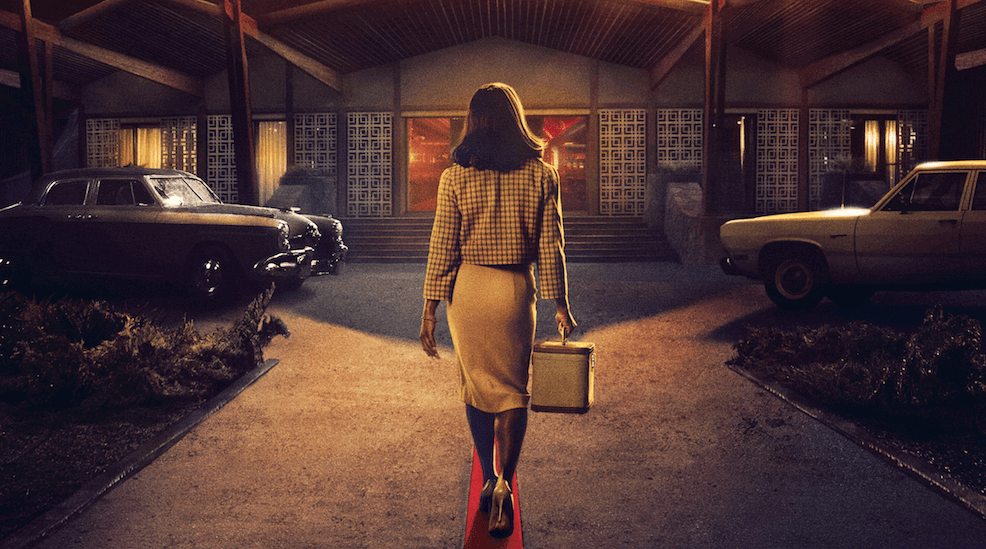
Goddard, who also wrote Cloverfield and The Martian, is back at it again this fall with his second directorial work, Bad Times at the El Royale, which was released on Oct. 12. With this film, Goddard attempts to examine and deconstruct another popular film genre: the crime thriller. Goddard accomplishes this in stride with a suspenseful, pulpy mystery that expertly examines three typical tropes of the crime genre – setting, characters, and atmosphere – while providing them with a fresh spin.
At the core of Goddard’s film is its innovative setting. It takes place in the late-1960s at the titular “El Royale,” a once-bustling but now-deserted hotel that lies quite literally on the border of California and Nevada. Amusingly, the state line runs directly through the lobby, with half the hotel’s rooms set in either state. Drinking is allowed on one side and gambling permitted on the other. The wild and unpredictable plot kicks off when seven strangers end up stranded together at the hotel on a dark and rainy night.
Events involving a hidden passageway, a robbery gone wrong, and a deadly game of roulette ensue. Goddard leans into one of the most essential tropes of the crime genre with an all-star cast playing outlandish and engaging characters, each hiding a secret.
Jon Hamm stars as Laramie Sullivan, a salesman with a Southern drawl and a sleazy attitude. Jeff Bridges plays a Catholic priest with a shady past and a suspicious tendency to play up the symptoms of his dementia. Dakota Fanning plays a sarcastic hippie who would rather be anywhere else than the “El Royale.”
But stealing the show is Cynthia Erivo, a newcomer very much poised for a break-out in the coming months due to Steve McQueen‘s Widows (Nov. 16) and a starring role in the 2019 Civil War abolitionist biopic Harriet. Erivo plays Darlene, a struggling soul singer who is just trying to make it to her next show.
As if that were not enough, the third act offers Chris Hemsworth—who also appeared in The Cabin in the Woods—playing a very shirtless but very chilling Charles Manson-esque cult leader.
In addition to its fantastic characters, Bad Times at the El Royale possesses a deliciously intoxicating atmosphere, with many elements contributing to its constant air of suspense.The film is a total throwback: the plot, focused on a small cast of characters confined in a singular environment as intensity bubbles, invokes Alfred Hitchcock and Agatha Christie as well as Quentin Tarantino. Goddard utilizes non-chronological story-telling to maximize the elements of mystery throughout the plot.
The film’s soundtrack, composed of a unique combination of eerie string pieces and 1960s doo-wop hits such as “He’s Sure the Boy I Love,” “He’s a Rebel,” and “Can’t Take My Eyes Off You,” helps maintain the film’s simultaneous feelings of foreboding and nostalgia.
Each of these elements, in addition to the period costumes and looming sense of intrigue, help contribute to the almost-suffocatingly intense atmosphere that helps carry the film through its 142-minute runtime.
Ultimately, while Goddard took risks by deconstructing the clichés of the crime thriller genre in Bad Times at the El Royale, his film sticks the landing due to its innovative setting, fascinating characters, and suspenseful atmosphere, all of which combine to form a wild and exciting story that will keep you guessing until the end.
Venom Marks New Peak in Tom Hardy’s Career
by The Cowl Editor on October 18, 2018
Arts & Entertainment
by: William Burleigh ’19 A&E Staff
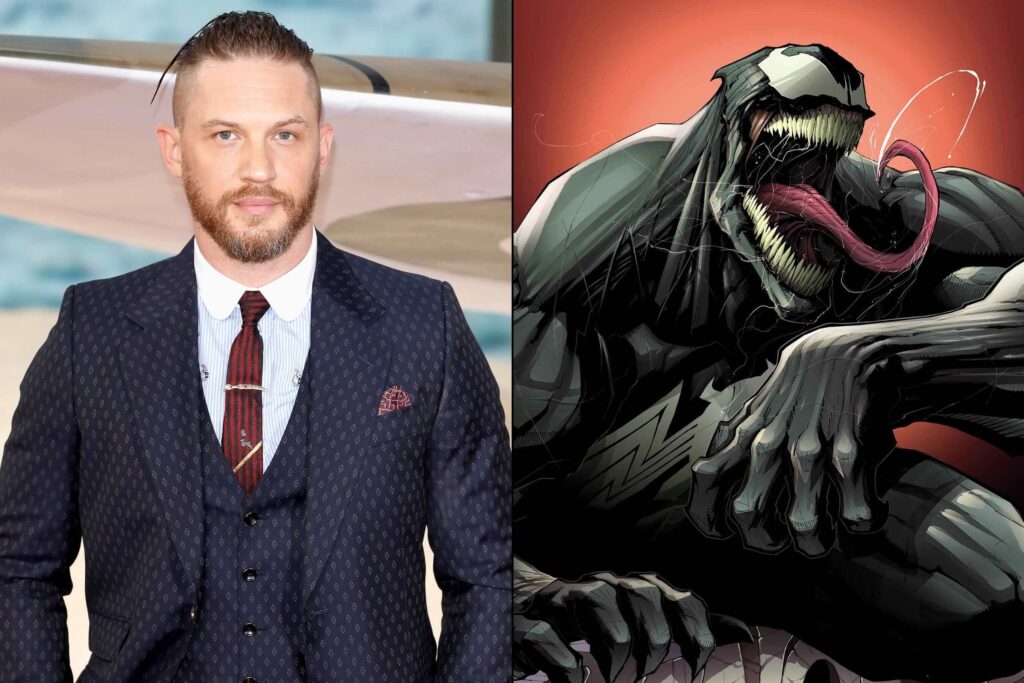
A new anti-hero officially joined the cinematic ranks of Marvel superheroes when Sony’s Venom was released on Oct. 5. The titular character, Spider-Man’s comic-book nemesis, is an all-black alien symbiote who requires a human host to bond with in order to survive.
In this film, Venom bonds with Eddie Brock (Tom Hardy), a popular San Francisco journalist who specializes in taking down corporate villains. When Venom begins to take over Eddie’s body with his extra-terrestrial powers, a “Jekyll and Hyde” story ensues as Eddie attempts to manage the violent tendencies of his parasitic hanger-on, along with his relationship with his fiancée (Michelle Williams).
Riz Ahmed co-stars as the genius company head who discovered and experiments with symbiotes.
Venom is directed by Ruben Fleischer, who is best known for Zombieland (2009) and Gangster Squad (2013).
The most notable aspect of the film is Hardy’s performance in his dual role as both Eddie Brock and Venom. Hardy, a London native, has steadily been gaining popularity throughout the last decade thanks to an acting resumé that is as enigmatic as it is entertaining.
Venom marks a new peak in Hardy’s career so far as it is his first lead role in a major blockbuster. After breaking out in Inception (2010), he gave a chilling performance as Bane in The Dark Knight Rises (2012). Next, he helped Charlize Theron propel Mad Max: Fury Road (2015) to new franchise heights, earned an Academy Award nomination opposite Leonardo DiCaprio in The Revenant (2015), and appeared as perhaps the most marketable name in the ensemble war drama Dunkirk (2017). Hardy seems more than prepared to take on such a large role and become a household name in the process.
In a recent interview with Esquire, Hardy stated that, during his one-year prep for the complicated role of an anti-hero who possesses an affinity for biting people’s heads off, he explored and tapped into three specific, and very different, influences, “Woody Allen’s tortured neurosis and all the humor that can come from that. Conor McGregor — the überviolence, but not all the talking. And [rapper] Redman: out of control, living rent-free in his head.” Hardy noted that he left out these muses in conversations that he had with Sony executive producers, “You don’t say s— like that to the studio.”
In addition to telling Eddie Brock’s origin story, Venom’s narrative is meant to accomplish the secondary goal of launching a new inter-connected series of films for Sony and Marvel, separate from Disney’s Marvel Cinematic Universe (MCU). This Sony Marvel Universe is meant to include sequels and standalone films that feature the oftentimes lesser-known heroes and villains that populate the Spider-Man comics. When asked for his thoughts about a potential need for Venom to perform financially well in order to build momentum for this Sony universe, Hardy stated that such ideas did not affect his creative acting process: “If the odds are stacked against Sony, that’s not my f—ing business. It’s irrelevant.”
Overall, Hardy’s engaging and dedicated performance as Eddie Brock is the anchor of Venom’s success. While Sony’s plans for sequels are currently unknown, Hardy’s layered and complex take on the infamous Marvel anti-hero is what makes Venom intriguing.
The Old Man & the Gun: Robert Redford’s Final Crime Caper
by The Cowl Editor on October 4, 2018
Arts & Entertainment
by: William Burleigh ’19 A&E Staff
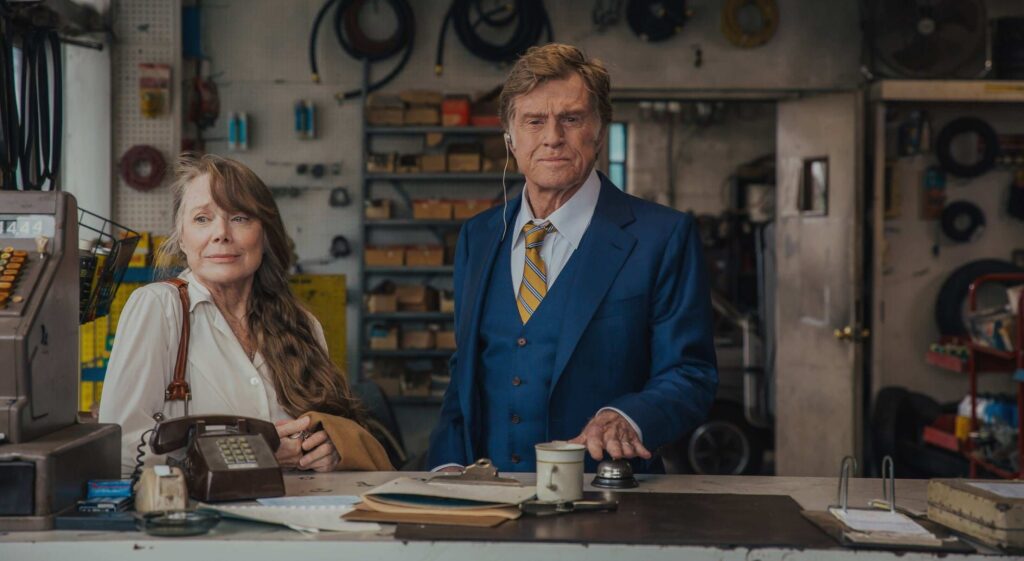
The film industry experienced a melancholy and nostalgic moment last week, as what is possibly Robert Redford’s final acting performance, in The Old Man & the Gun, reached screens on Sept. 28. Redford, who has been discussing the idea of retiring his acting career since 2016, announced his intent to retire in August, although doubt has since been cast on this statement.
Based on a true story, the dramatic comedy The Old Man & the Gun tells the story of Forrest Tucker, a gentlemanly bank robber who escapes from San Quentin prison at the age of 70. The ever-polite Forrest then goes on to pull off a string of heists that confound authorities and enchant the public.
The film was written and directed by David Lowery, who is known for his well-received Disney remake Pete’s Dragon (2016)—which also starred Redford—and intriguing indie hit A Ghost Story (2017).
Sissy Spacek co-stars, playing a woman who falls for Forrest despite his criminal history. Casey Affleck also appears as a pursuing detective who becomes captivated with Forrest’s commitment to his craft.
The Old Man & the Gun has gained positive reviews since initially premiering at the Telluride Film Festival on Aug. 31. Rolling Stone described the film as an “unassuming, exuberant gift,” praising Redford’s “virtuoso performance,” the “glorious” Spacek, and their rapport as “the essence of screen chemistry.” Indiewire applauded The Old Man & the Gun’s ability to act as a piece of self-reflexive nostalgia without sacrificing originality, calling it“the best kind of tribute, one that understands the material so well that it inhabits its very essence.”
With discussion of the film’s sentimental bearings and the on-going dialogue surrounding Redford’s potential retirement there has been a lot of reflection on the legacy of his lengthy and famed career.
One of Hollywood’s most famed movie stars, Redford reached major popularity in 1969 when he starred alongside Paul Newman (who died 10 years ago on Sept. 26) in the Western adventure Butch Cassidy and the Sundance Kid, an early indication of Redford’s penchant for portraying outlaws. The two celebrities and lifelong friends would continue their cinematic partnership in 1973, with blockbuster crime caper and Best Picture winner The Sting, one of Redford’s greatest hits. Redford tackled an iconic F. Scott Fitzgerald character with The Great Gatsby in 1974, and his role opposite Dustin Hoffman in the ever-relevant and important political thriller All the President’s Men (1976) was considered a landmark performance. His directorial debut, drama Ordinary People (1980), became one of the most critically-acclaimed films of the decade and won Academy Awards for Best Picture and Best Director for Redford.
More recently, Redford gave what many believe to be the finest performance of his career in All Is Lost (2013), playing a near-totally silent sailor stranded at sea and the only character to appear on-screen. Redford even waded into the superhero genre when he appeared in Marvel’s Captain America: The Winter Soldier (2014). Overall, this filmography leaves little doubt that Redford is one of the most prolific leading men in Hollywood history.
Beyond acting and directing, Redford is the founder of the Sundance Film Festival and was honored with the Presidential Medal of Freedom in 2016 by Barack Obama.
Amidst all the discussions of The Old Man & the Gun being Redford’s swan song came a curious development. At the premiere of the film on Sept. 20, when asked if he is truly retiring, Redford told Variety, “I think that was a mistake. I should never have said that.” Redford’s statement is somewhat ambiguous as it raises the question of whether he meant that his ‘mistake’ was choosing to retire, or choosing to make a public announcement about the matter.
He went on to say, “If I’m going to retire, I should just slip quietly away from acting. But I shouldn’t be talking about it because I think it draws too much attention in the wrong way. I want to be focused on this film and the cast.” When asked to clarify if this is not his final film, Redford responded, “I’m not answering that.”
In a later interview with the New York Times, Redford seemed to support the idea that his walk-back was more a statement of regret in regards to his handling of the announcement. He desired to deflect attention away from his career saying, “By talking about that, it drew too much attention to me rather than what I was here for, which was to promote and support the film that David Lowery’s made.”
Whether or not this is really his final acting role, The Old Man & the Gun serves as another fine performance for Redford, the leading man who has graced screens for over half a century and has nothing left to prove.
The Old Man & the Gun is currently playing in select theaters and will expand its release nationwide on Oct. 12.
Time to Binge Like a Maniac
by The Cowl Editor on September 27, 2018
Arts & Entertainment
Jonah Hill and Emma Stone Shine in Netflix’s New Twisting Sci-Fi Series
by: William Burleigh ’19 A&E Staff
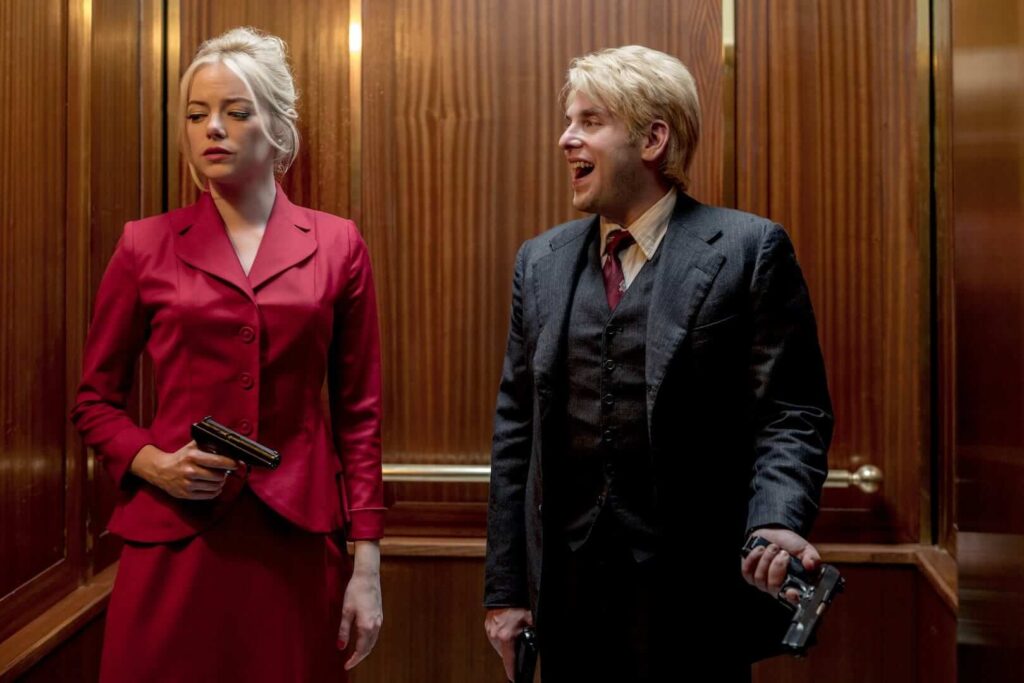
A new Netflix limited series premiered last weekend, on Sept. 21: Maniac, a surrealistic science fiction show starring Emma Stone and Jonah Hill.
Maniac, a dark comedy set in a futuristic world, tells the story of Owen (Jonah Hill) and Annie (Emma Stone), two strangers who are drawn into the late stages of a mysterious pharmaceutical drug trial using revolutionary pills created by Dr. James K. Mantleray (Justin Theroux). The two meet and form a relationship at Neberdine Pharmaceutical and Biotech (NPB), where they participate in a radical new kind of psychological treatment. Owen and Annie are assured that, following their three-day trial, all of their problems will be solved forever but not everything is as it seems.
Both characters suffer from mental health issues. Owen, the fifth son of a wealthy New York family, has struggled his whole life with schizophrenia. He hallucinates an imaginary mentor who appears to him at random moments, ominously assuring him that he is the chosen one meant to save the world. He joins the trial at NPB to confront his inner demons and escape his oppressive family.
Annie suffers from depression and abandonment issues stemming from a tumultuous relationship with her mother. She deals with this, along with her regret over a tragic accident involving her sister, by abusing a painkiller pill that NPB created, the “A” pill. Annie’s desire to overcome her addiction and obtain emotional catharsis is what leads to her involvement in the drug trial.
During their treatments, Annie and Owen experience multiple dream-like distortions of reality that place them in alternate universes, with bodies and lives different from their own.
These vignette-like illusions include adventures involving a married couple on Long Island, con-artist gangsters in a noir mafia tale, and elves in a Lord of the Rings-like fantasy realm. These various genre changes and character twists only add to the mysterious, surreal atmosphere that keeps the viewer wondering as to what is real and what is imagined throughout the course of the series.
In addition to a talented cast and engaging story, Maniac boasts a skilled director behind the camera: Cary Joji Fukunaga, whose diverse résumé includes an adaptation of Charlotte Brontë’s Jane Eyre (2011) and Netflix war film Beast of No Nation (2015).
Fukunaga is most well-known for his fantastic work on the HBO detective drama True Detective. Fukunaga served as director and executive producer for the critically-acclaimed first season, earning an Emmy award for his direction.
His biggest project yet is still to come. Just recently, on Sept. 20, Fukunaga was announced as the director of the next James Bond film, the 25th entry in the 007 series. This currently untitled Bond film, Daniel Craig’s final outing as the superspy, will go into production next year and is expected to be released on February 14, 2020.
With so many experienced professionals both on and off screen, it is no wonder Maniac is as engaging, immersive, and worth watching as it is. All 10 episodes of Maniac are currently available to be streamed on Netflix.
